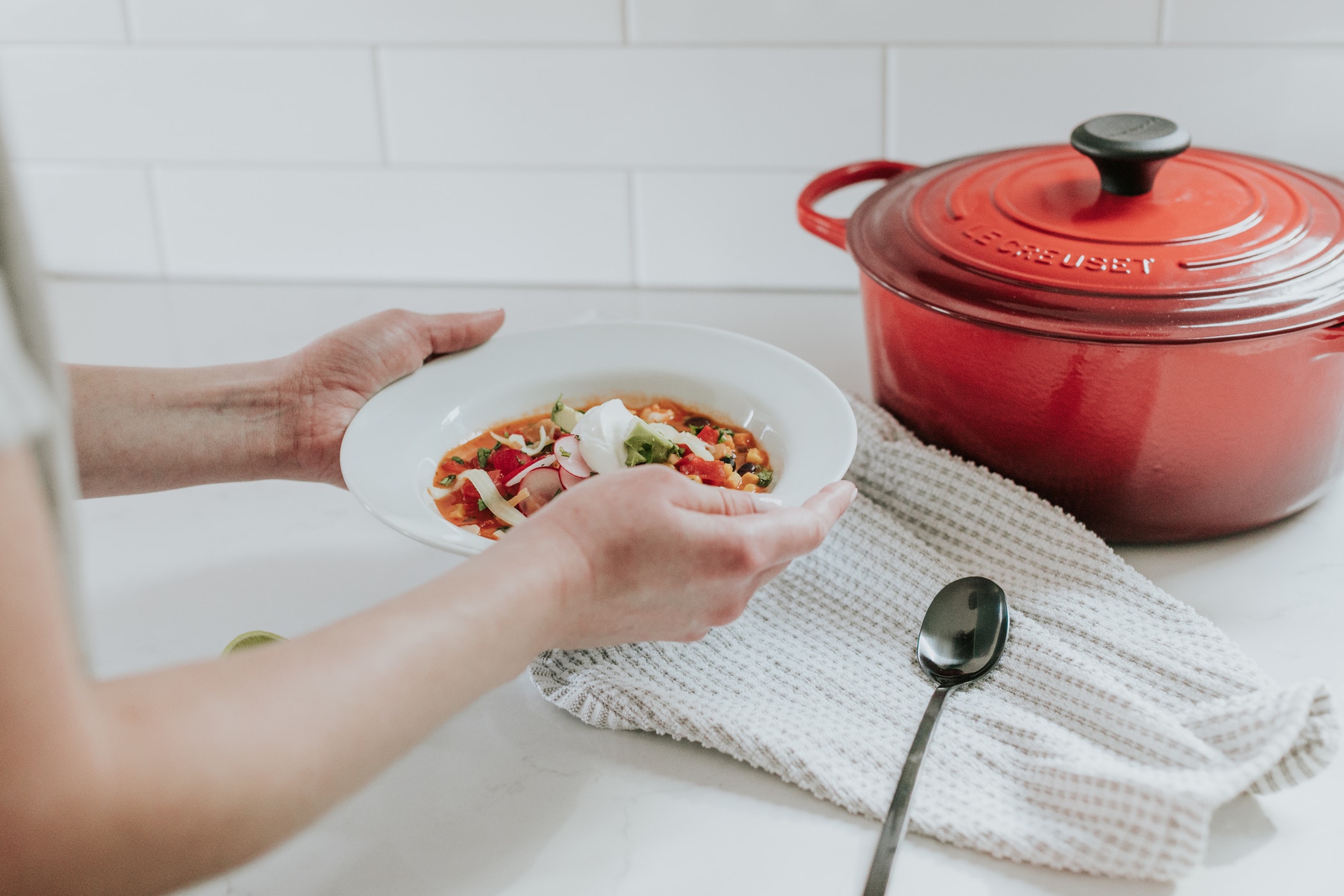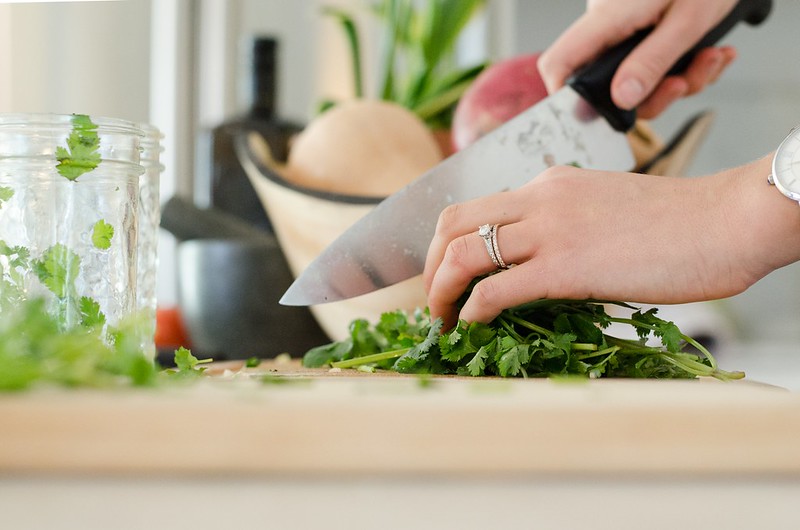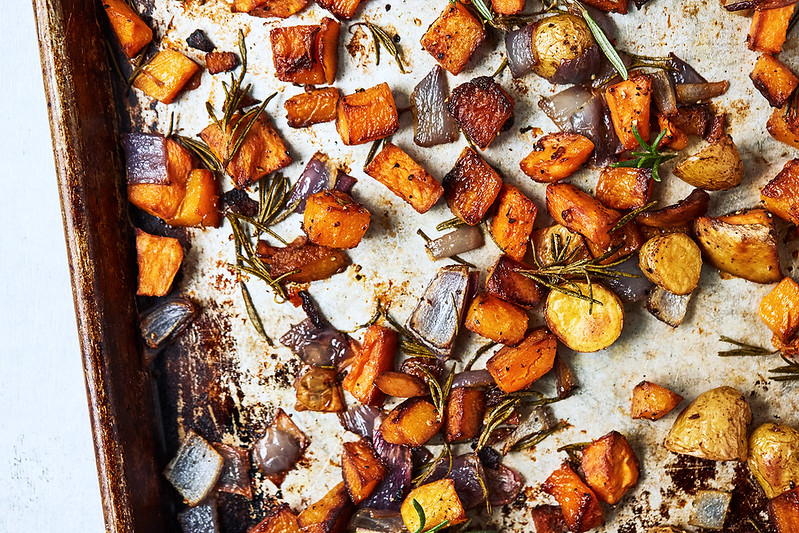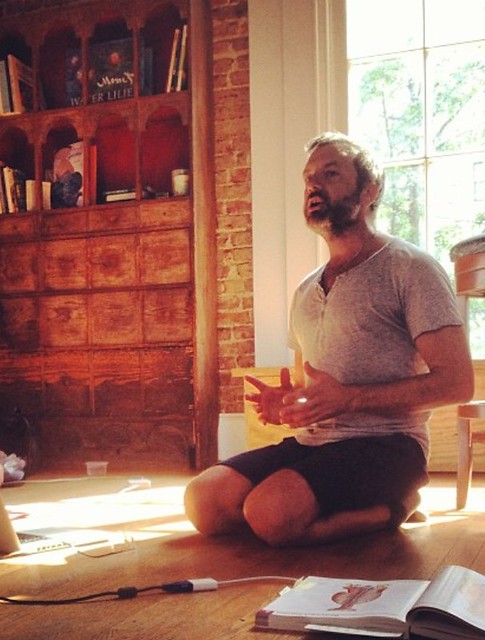-
5 Simple Tips to Relax and Calm Your Mind and Body
This post was created in partnership with MegaFood, a company crafting premium supplements with real food and added nutrients. I am proud to work with brands that care about the health of its consumers and the planet. As always, all opinions, ideas and text are my own. Thanks for supporting the sponsors that allow me to create new and special content like this for Tasty Yummies.
There is no denying stress is part of the human experience and while stress may be an inevitable part of living, supporting the body in its stress resiliency and working on our response to stress doesn’t have to be a complicated undertaking.
Stress is pervasive, and as I teach all of my Nutritional Therapy clients, it isn’t just the typical mental and emotional life stressors we need to consider. Stress and our body’s response to stress can sneak in through blood sugar dysregulation, inflammation, circadian rhythm disruption, and so much more. What are we to do when stress surrounds us and we are desperate to relax and find peace and calm in our mind and body?
Many of the stressors we’re exposed to might be beyond our control; we can control our response to stress and bring a sense of calm to the mind and body to support our nervous system from being impacted by the stress.
Here are my top 5 tips to relax and calm your mind and body and to support a healthy response to stress:
-
Five Tips for Mindful Eating and Why it Matters {+ Video}

Mindfulness isn’t just yoga and meditation, burning sage and sitting on a meditation cushion chanting ‘OM’. Mindfulness can extend into all aspects of our lives with just a little conscious awareness and minimal effort. Mindfulness is derivative of a “monastic” practice, meaning it was originally made for monks. It utilizes deliberate focus to increase your consciousness and appreciation of the present moment.
One of my favorite methods for incorporating mindfulness with my clients is to do so at mealtime. When we aren’t totally present at meal time, if we aren’t eating mindfully, it can be a disaster for our digestion, for our stress levels, for our moods and many times we can end up accidentally overeating. Often the opposite of eating mindfully is eating mindlessly, and we all know how that goes for us.
The practice of mindful eating is all about learning to pay attention. It can be a form of meditation, almost. Instead of mindlessly shoveling food into your mouth almost unconsciously, not even tasting the food you’re eating, I want to teach you how to slow down and savor your meals. With mindful eating we take the time to pause, to notice thoughts, feelings, and sensations surrounding our meals and to truly taste each bite. I have found this practice be vital to eating intuitively and finding a lifestyle that is appropriate for the individual.
Not only will this make meals more pleasurable and delightful to ALL our senses, but it’s also better for our digestion and it keeps us from overeating.
When our body is in a chronic state of stress, our nervous system will actually shut down our digestion system, as a protection mechanism. This is why one of my all time favorite tips for folks deal with digestive issues to take a look at the stress in their life and even more specifically the stress around meal times.
As well, when we are stressed or not paying attention it’s hard to truly understand and realize the need to stop when we are satisfied, we cannot do any of this if we are on autopilot, shoveling food into our faces.
As far as I am concerned, if you’re not truly tasting and enjoying your food – that’s a problem. How can you ever expect to be able to listen to your body’s subtle cues, to tap into your intuition and
Mindful eating is not a quick fix, but very often it is a very valuable solution, of course it’s also FREE and like most important things in life, it takes practice.
Before we get into the mindful eating tips, I wanted to very quickly explain some of the important things you NEED to know about digestion and why mindful eating can help.
-
5 Tips for Your Sugar Detox: How to Fight the Cravings, Stay Sane and Feel Free.
Whether or not you have committed to a structured sugar detox or you are simply looking to cut your intake of sweets and manage the cravings – today, I am sharing my 5 simple tips for your sugar detox. It’s not about dieting or crazy rules or restrictive eating as punishment, it’s just about being smart, prioritizing your health and feeling in control of the cravings!
Hey Sweet Thing! Are you addicted to sugar? Do you feel trapped by your constant cravings for something sweet? If you want to break the addictive cycle to sugar, it’s totally possible, it’s not actually as bad (or as hard) as it seems and feeling like you are in control of your cravings – is truly priceless!! Trust me. Removing the addiction to sugar isn’t about extreme restrictions forever or never ever having a sweet again, rather this is about loving your body and your health enough to want to feel your bet, to get yourself out of the constant blood sugar roller coaster and to break free of the sugar cravings that hold you hostage!
I know pretty much all of us can relate and have been there, but I find it’s especially challenging for folks after the holidays. Whether or not you have committed to a structured sugar detox or you are simply looking to cut your intake of sweets and manage the cravings – today, I am sharing my 5 tips to drop the sugar – cuz friends, you are sweet enough already – haha!
Why Cut Back on Sugar?
Sugar at it’s best lights us up, it gives us pleasure in times of stress, depression and pain, but we all know those feelings are short-lived. At it’s worst, sugar in excess can make you feel sluggish, bloated, anxious and crabby – so why do you still crave it? Because it’s addicting. It triggers the same reward and pleasure centers in the brain, that some narcotics do. It’s addicting. Is sugar as bad for us as cocaine? NO – I am certainly not implying that, but I think it’s important to recognize that sugar definitely has the ability to have a very strong hold on us and it’s not our fault.
Excessive Sugar Can:
- raise our blood sugar (blood glucose), which requires our body to constantly be releasing insulin to manage, then we have the crash – it’s highly taxing to the body to be in this constant blood sugar roller coaster of up and down and it can affect other systems of the body, as a result.
- lead to weight gain from overeating, along with elevated triglycerides, insulin resistance, and other indicators of metabolic syndrome. Refined sugar has also been shown to reduce immune system efficiency.1https://www.ncbi.nlm.nih.gov/pubmed/4748178, https://www.sciencedirect.com/science/article/pii/S0271531784800573.
- cause elevated blood glucose levels which has been shown to promote cancer growth 2https://www.sciencedirect.com/science/article/pii/0006291X85919308.
- feed bad gut bacteria. When we eat a high-sugar diet, the undesirable bacteria thrive and start to grow out of control, causing a waterfall of health issues, while our beneficial bacteria dwindle in number.
- cause inflammation which can affects our entire body, but very specifically our immune system and our digestion.
Does this mean we can’t have ANY sugar ever, nope! I am not insinuating that extreme, unattainable level of perfection with our eating, but of all the foods available to us, I would argue that sugar is the most pleasure-enducing and therefore the hardest to moderate. Limiting yourself around the sweets isn’t a problem with you or your willpower, it’s a problem with the sweets! They are hyper palatable and designed to make you want more. So, what can we do to break the addiction to sugar and begin to feel like we are the ones in control, rather than the sugar?!
References
1. ↑ https://www.ncbi.nlm.nih.gov/pubmed/4748178, https://www.sciencedirect.com/science/article/pii/S0271531784800573 2. ↑ https://www.sciencedirect.com/science/article/pii/0006291X85919308 -
11 Natural Ways to Boost Your Immune System
A healthy body is dependent on a strong immune system. Rather than just strengthening our immune system we want to train our immune system to do it’s job correctly. Today I am sharing just some of my favorite natural tips for supporting and building a strong immune system that have worked for me. Here are 11 Natural Ways to Boost Your Immune System…
11 Natural Tips to Boost Your Immune System
Simple, holistic tips to fight illness and strengthen your immunity PLUS what you can do if you do get sick, to fight it quickly.
Go With Your Gut
I can tell you from personal experience that the very best way to ward off chronic illness, colds, flus, infections, allergies, food sensitivities and controlling / avoiding autoimmune disease is to heal and strengthen the gut! With 70-80% of our immune system’s cells occupying our gut, this is home base for our vitality and wellness. Our gut bacteria helps the immune system’s T cells develop—teaching them the difference between a foreign substance and the body’s own tissues. Without these important immune soldiers doing their job to protect us, the nasties get in, they slip by the troops, invade, wage war, take over and it’s not fun!
With years of comprised digestion, intestinal bacterial overgrowth and finally being diagnosed with a parasite, I personally spent a solid decade to 15 years, getting terrible sinus infections, several times a year, every year, most times it then eventually evolved into bronchitis and upper respiratory infections. I got every single strain of every cold, flu and stomach bug that passed through town – I even battled the Swine Flu when that was a thing. On top of all of that, I suffered for many, many years with a variety of environmental allergies – ALL of this stopped when I finally healed my gut and prioritized proper digestion. It’s magical really. But, it’s not. It’s simple.
As you’ll hear echoed many times throughout this article, and if you spend more than about 5 minutes chatting with me at any given time, our gut is vital to our immune health and it’s the control center for our bodies to decide what is friend and what is foe. I highly encourage you to prioritize optimizing your gut, both for the cold and flu season ahead, as well as the future of your overall health and wellness. If you want to learn more about how to heal your gut – GRAB THE FREE GUT HEALTH 101 GUIDE BOOK
Along with tips for strengthening and healing your gut, here are some tips to Naturally Boost Your Immune System:
-
Real Food Resources for Meal Planning, Grocery Shopping & More. How-to Make Cooking at Home Easy.
You guys asked for it, so I am sharing my favorite tips, tricks and resources for making healthy cooking at home as easy as possible. We’re chatting meal planning, meal prep, grocery shopping, meal kits and more.
Real Food Resources for Meal Planning, Grocery Shopping & More.
How-to Make Cooking at Home Easy.Whether you are brand new to cooking at home, or an old pro, I think we can all agree that it can definitely help to have some tricks in your back pocket for staying organized, getting ahead and being well-planned. Cooking several real food meals a day, every day, every single week, this is no small feat. So first, #1) I want you to give yourself a big-ass high five for doing it at all (or even just getting started thinking about it). You are killing it! and #2) Your future self will thank you for making it sustainable by keeping it easy and approachable for the long haul. Whether it’s for one, a couple or a whole big happy family, cooking at home takes planning, organization, practice and of course – commitment. I’m here to help.
I can say that no matter what approach you take to eating: paleo, keto, gluten-free, Whole30 or just a healthful, traditional, real food focus – having quality, fresh, nutrient-dense whole foods on hand, a pantry full of quality staples plus a solid plan of action, this is about the only way you can guarantee success when it comes to cooking at home and living your best (and most healthy) life!
Real Food Meal Planning:
I think it’s a given, but being planned out is an absolute necessity. You can certainly make your own meal plans, week in and week out and plan every single meal, creating your own grocery lists, planning it out appropriately to your ever-evolving schedule, but here are a few options to make things even easier on you:
-
5 Mealtime Tips to Improve Digestion
Digestive dysfunction is easily the most common chronic ailment I encounter working as a Nutritional Therapist. As a follow-up to my in-depth series Digestion 101, I wanted to offer five, simple actionable steps that you can take right away to immediately begin the improvement of your digestion.Digestive dysfunction can have many faces – gas, bloating, stomach aches, indigestion – we’ve all been there. Yes, there are plenty of quick-fix, short term “bandaid” approaches to managing the symptoms, I see so many people that often pop antacids, take anti-gas, diarrhea or constipation meds just to get through the day. Sadly this only manages the symptoms of a larger problem and more often than not the root cause of the dysfunction is left untreated and the problems still persist.
Rather than popping pills or difficult, unnatural approaches, here are 5 simple, meal-time tips to improve your digestion, naturally.
5 Mealtime Tips to Improve Digestion
-
5 Steps to Design a Healthy Work Day
5 Steps to Design a Healthy Work Day
[soundcloud url=”https://api.soundcloud.com/tracks/274666123″ params=”color=000000&auto_play=false&hide_related=true&show_comments=true&show_user=true&show_reposts=false” width=”100%” height=”166″ iframe=”true” /]
Many of you know this but some probably don’t, but my amazing hubby Mark, has a very successful daily podcast show called Adventures in Design. Adventures in Design is a fun and unique look into the lives of many creatives from varying walks of life. Rather than the standard Q&A-style interview, with boring regurgitated bios and stock answers, Mark uses his incredible skill set and love for gabbing to dig deep into what makes people unique and he offers them the platform to share their authentic stories with inspiring nuggets of success and failures that have worked for them along the way.I am so honored to be back again as a guest on the AID podcast, where I am sharing 5 super simple steps to a successful, healthy and vibrant workday! We chat about nutrition, eating mindfully and simple things you to do to fuel your body for maximum success! Mark even surprises me with some ridiculous on-the-spot nutritional quizzes, keeping me on my toes, as always.
The first hour of the show is free on Soundcloud (use the player above) and on iTunes and the second hour, where we talk more about the evolution of my brand, my conscious, but challenging choice to put things on pause to educate myself further, plus I even share some social media tips and more – this is for paid Circle of Trust members. Sign up at www.aidpodcast.com
Note: there’s a little mild swearing, not too much, but it’s how we talk ;), soooo you have been warned!
-
Looking to Incorporate Yoga Into Your Life? Tips and Inspiration from Some of My Favorite Teachers.
In this month-long total immersion in my yoga practice, as I get my certification to teach yoga – there really isn’t much else on my brain besides just that. Yoga! I find whenever I mention yoga, either here or on my Facebook page, I tend to get a lot of the same questions from people about yoga, the practice, where to start and all that comes along with it. I know this is a nice long post, likely intimidating as a reader – but, I can promise you if you have been wanting to incorporate a regular yoga practice into your life and you just don’t know where to start, maybe you are a tad nervous to just jump right in, there are some amazing thoughts and tips here for you. If you have lost touch with your practice and you need some lovely inspiring reminders of what your yoga practice can do for you, read this. If you just want to know what some people see in it or why so many people are drawn to yoga, take this all in. Regardless of why you read this post, I can assure you, it will inspire you to get onto your mat, whether for the first time or after some time away.
I asked seven of my favorite yoga teachers, some from my past, some from my present, the following two questions:
– What advice can you give someone looking to start a regular yoga practice?
– How has a regular yoga practice changed your life?
James Brown – American Yoga School, Venice Beach, CA
What advice can you give someone looking to start a regular yoga practice?
First, I would say, “Congratulations!”
Start with a beginner class. You might stay at that level for two weeks or ten months or a few years or forever. But you will know, if you start there, if, when and why to move on. I’d also recommend that you look for a class that does not bill itself as “flow” for your first few classes. Start with classes that teach you the basics before flowing. Flow classes tend to be light on instruction.
Try different teachers and classes until you find one that works for you. If you don’t feel good about yourself at the end of the class, move on to another teacher or class. Know that there are many formats and styles of physical practice, and within any style, every teacher will be a bit different from every other one. No matter your physical ability, the teacher should be able to instruct you in a way that you feel that you are already successful. While fancy poses may take a long time to master, a good teacher makes it clear from the start that the level of the pose has nothing to do with the quality of the practice. I have met many beginners who were more advanced, because of their attitudes, than more seasoned practitioners who could do more impressive things with their bodies. Find a teacher who teaches the poses without making the poses themselves the focus.
Set achievable goals. You don’t have to start by going every day. I started with a once-a-week course and that was easy to manage, so I stuck to it and 20 years later I am still at it. And if you fall off the wagon, just get back on. The yoga will always wait for you. Give yourself plenty of time for it to really stick and to become part of your life.
How has a regular yoga practice changed your life?
I can’t really think of any ways that it has not improved my life. The most profound difference is that I am happy. I feel more connected to others and I am content with the imperfections in my life.
Less profoundly, I am aging differently from the generation that I watched age before me. I am almost 50 and my body is still getting more functional each year than it was the year before. I know that things have to turn around at some point, but the age when that happens still seems to be quite distant.
An interesting affect of yoga practice is that it gets me to make better decisions in the rest of my life, particularly with issues of health and diet. The physical practice I do has made it more clear to me how those things affect my body, so I make better choices.Ramona Tamulinas – Yoga World Studio, Long Beach, CA
What advice can you give someone looking to start a regular yoga practice?
Beginning a yoga practice is a unique, personal experience. Some people decide to practice because of health reasons, physical reasons, emotional reasons, wanting to look like a hot yoga girl, it’s a good way to meet girls (yes, I have been told more than once that is why someone started), improving flexibility, your boyfriend/girlfriend says it’s a must if you want to keep dating… the list goes on and on.
I would recommmend exploring the studios in your area and try different teachers until a place and a teacher resonates with what you are seeking. Once you find that teacher, study with them in a class setting and if your bank account allows – book some private sessions. Private sessions allow you to feel secure and comfortable and they help your teacher know you better. It is most important that you found a place, a teacher who allows you to feel comfortable and at ease. I believe deeply in a practice that builds from the foundation of comfort and ease. Yoga, if you jive with it – leads you down a magnificent path of self transformation. Loving where you begin is therefore vital.
How has having a regular yoga practice changed your life?
To me yoga is more than asana. It is service and compassion to my community. Therefore my yoga practice has taught me to embrace my strengths which are being of service and compassionate.
Before yoga, and sometimes even since finding it, I felt I didn’t have a place. I felt out of place in so many social settings, in so many realms of popular culture I searced for a place to belong and I couldn’t find it. I have always been an introverted person and one who lead internally with my heart. In this crazy world that encourages the worldly and external – I often felt lost. When I found yoga, I was full of self-doubt and wanted to be anyone else but me. I remember telling my friend who took me, “I am already flexible and calm. I need to become tough and strong.” Well yoga did that. I can say practicing has allowed me to stay sweet, calm, and flexible but allowed me to embrace the strength and toughness inside me. In a way, yoga helped me find my inner rebel.
At times I stray from practice and I notice myself questioning this inner strength, but my inner strength would realize how important this wild practice supports me and encourage me back to wards it path, back to my mat, back to teaching, back to learning. It is vital toward my life as anything inside my physical being.
It is as important as my heart, my brain, my blood, everything within me is supported by yoga. For me yoga lead me to the path of embracing my true self, my connection with the universe and my purpose. When I was a young girl the father of my church told me, “I want you to remember five words. I am beautiful, thank God.” He said “every time I see you I am going to wave with five finger to remind you”. He is gone now, but yoga has reminded me of that lesson everyday.
-
Restricted Diets: Advice For Dining Out
This next post in my ongoing Restricted Diet series with the Free People blog BLDG25, covers a topic that people write me requesting help with and advice on, all of the time. Besides eating at parties or events where the menu is out of your control (which I talk about here), dining out is one of THE most challenging situations when you have dietary restrictions. As with most situations, the best thing you can do is plan ahead and do your research.























